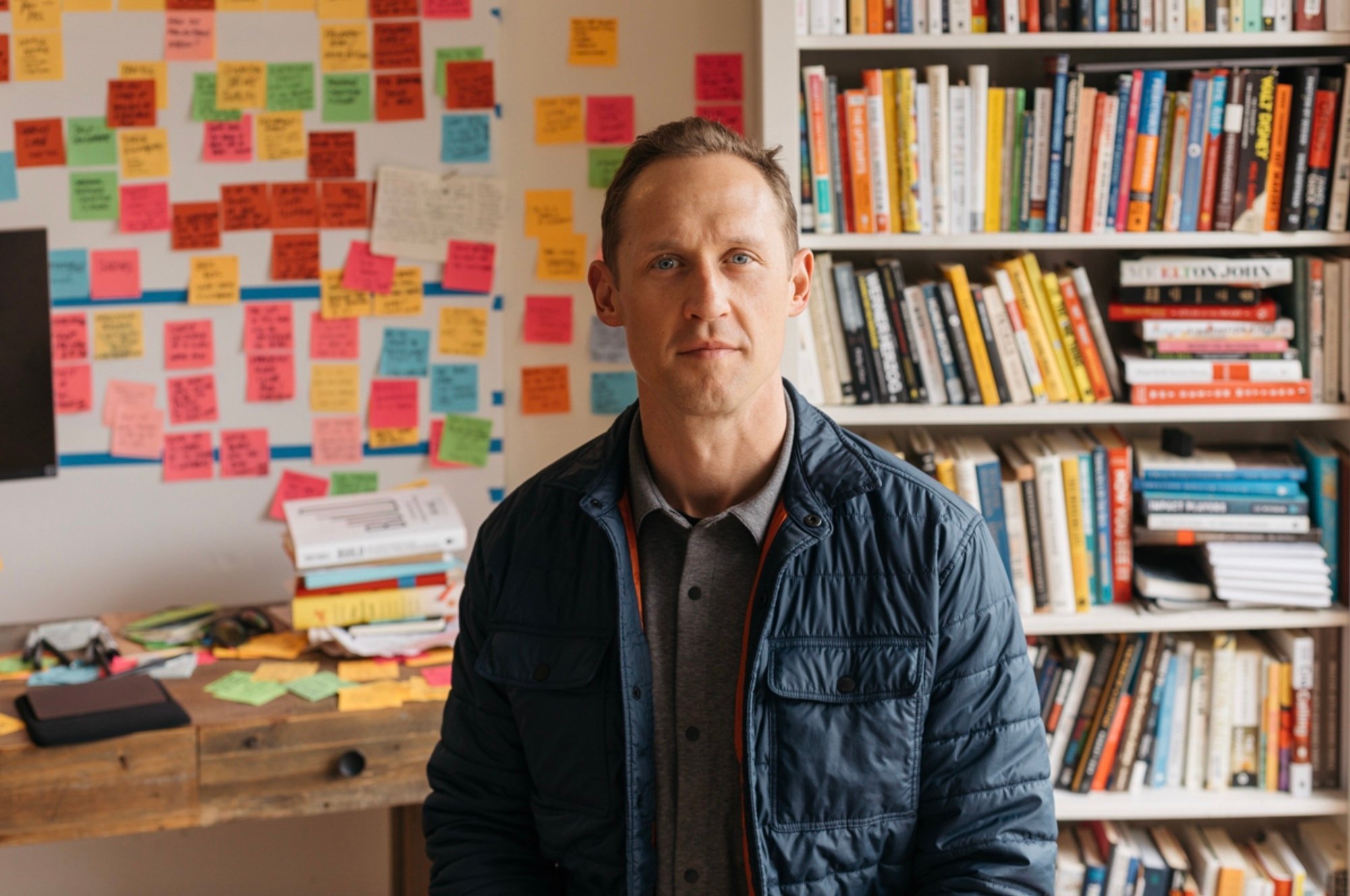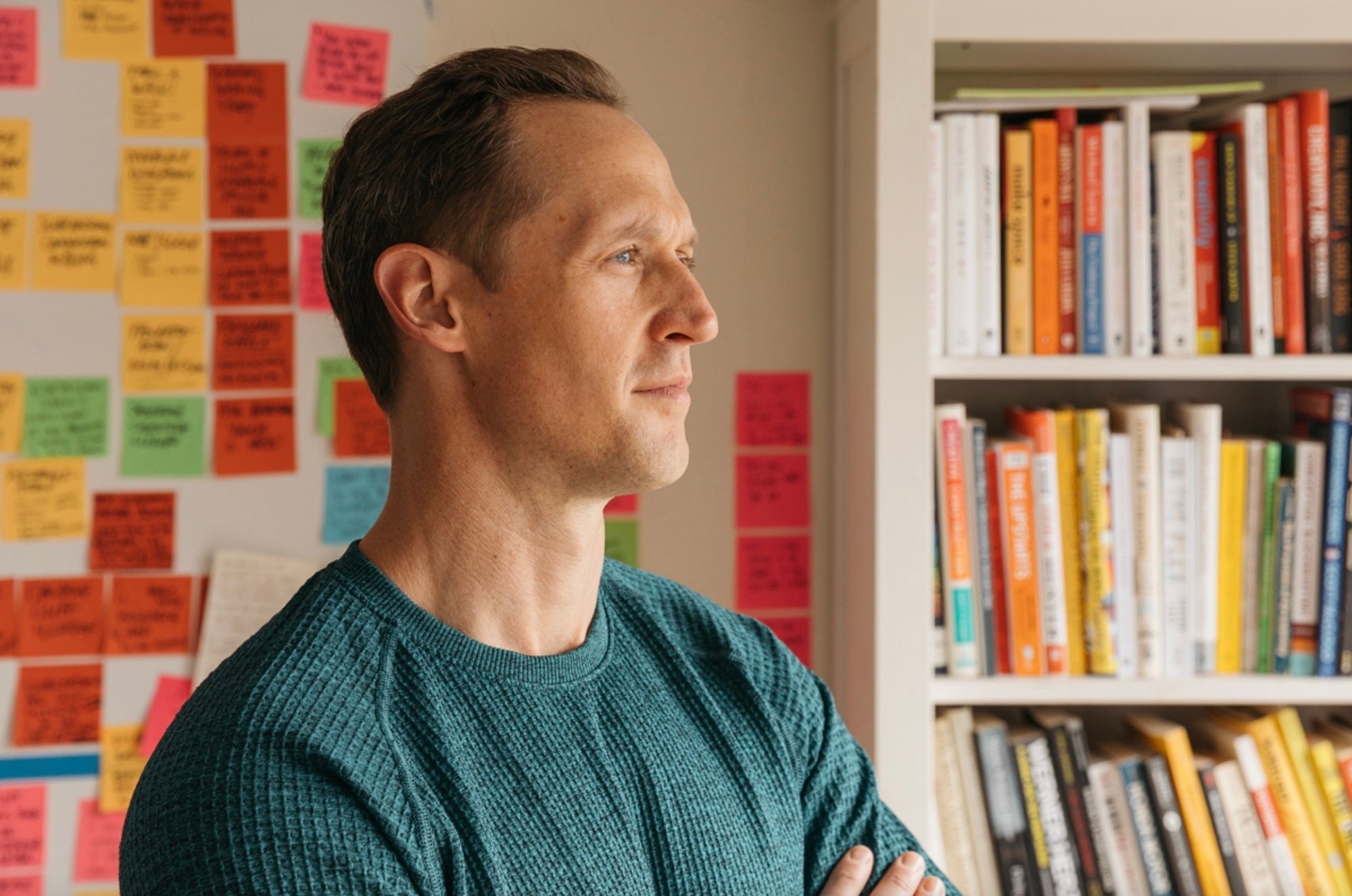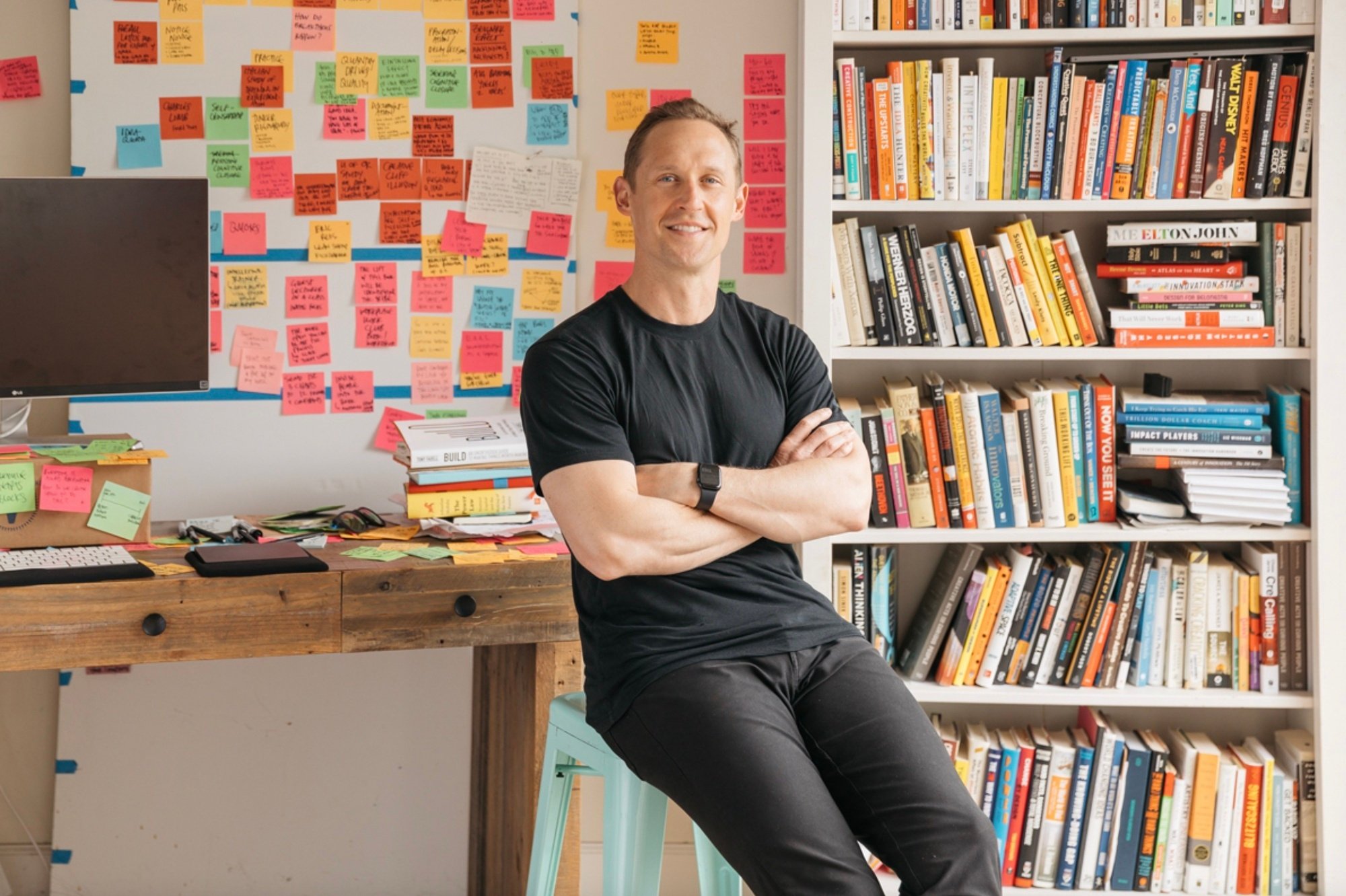Jeremy Utley on Ideaflow, and why it's the only business metric that matters
Mar 31, 2023
7 mins


Toronto expat and Paris-based journalist
Creativity and innovation is a numbers game.
What separates the repeat Nobel-prize winning scientists, disruptive product inventors and prolific novelists from their status quo competitors, is not a genetic predisposition to creative thinking, but an understanding of how to achieve what authors Jeremy Utley and Perry Klebahn call ‘ideaflow,’ in a book of the same name.
In fact, it’s the only business metric that matters, they write, regardless of industry.
The book distills some of the principles they teach as directors of Stanford University’s Hasso Plattner Institute of Design, also known colloquially as the ‘d.school,’ and at their Launchpad accelerator program for startups.
Readers, particularly those who don’t work in creative sectors (and therefore stand to benefit most from this kind of book) are challenged to reframe the way they think about creativity and productivity with concepts that tout quantity over quality, chaos over order and effectiveness over efficiency.
We spoke to Utley about the importance of ideaflow, how to achieve it, and how to work smarter—not necessarily harder.
What is the concept of ideaflow all about?
The basic gist of ideaflow is the measure of how many solutions you are generating to solve a problem. The research is emphatic: the most important factor that determines the quality of the solution you implement is actually the number of solutions that you generate and explore. So if you want to implement better solutions, you need to generate more potential options. Yet for most people, the tendency is to think of one right answer then they move on.
Welcome to the Jungle note: Take the conventional brainstorming session, in which team members toss out eight to 10 ideas during an hour-long meeting to solve a pressing problem at the company, be it declining sales or a supply crisis. Typically, the team will settle on the first good idea, guided by consensus. Utley argues that this approach is a short-sighted one.
They think of a solution and then they fixate on that. They’re actually blinded by the other possibilities. Because of this bias we tend to implement suboptimal solutions without even realizing it. The solution is generating lots of solutions, then we effectively solve the problem of solving problems for good because the key is volume.
In the book you quote a ratio that may cause some sticker shock: that every good solution needs at least 2,000 ideas. Tell us about this 2000: 1 concept and why it’s less daunting than it actually sounds.
When someone asked Linus Pauling, a multiple Nobel prize-winning chemist, how he came up with so many good ideas, he said, ‘It’s easy. You just need to have a lot of ideas. And I have a lot of ideas.’
But how many is a lot? Many people define that as 10 to 20. But what the research suggests is actually a number closer to 2,000. That number varies by category though. In pharmaceuticals it’s closer to 10,000. And James Dyson made over 5,000 prototypes for his first bagless vacuum. The point is, it’s basically a lot more than you think when trying to find a good idea.
What do you define as an idea?
What we mean by idea is quite simply a new connection. When you go through the world looking for unexpected and new connections, all of a sudden the world is filled with ideas.
And here’s the thing: I didn’t say anything about a good idea. I said you have to have lots of ideas. The number is daunting, but it’s possible if you lower the bar significantly for what you define as an idea. And what you’ll find is that if you have a lot of bad ideas, you also have a lot of good ideas.
In the book, Utley encourages readers to suspend self-censorship and auto-correct tendencies, and to give as much weight to the absurd, the ridiculous and the obvious as they do realistic, feasible and logical solutions. It’s in this way that new connections can be made and novel pathways forged.
But this may be easier for some than others.
This is going to be hard to swallow for a certain personality profile. I’m thinking of the perfectionist who is programmed to nix anything that falls within mediocrity. Are there certain personality profiles that will be harder to convert to this kind of strategy than others?
You know, as a recovering perfectionist myself, I can relate to that sense of paralysis. One of my life goals is actually to free perfectionists from the tyranny of perfectionism and to give perfectionist type A personalities just like me permission to deviate from the kind of well-defined path of good productivity and efficiency.
Your goal shouldn’t be to be efficient. Your goal should be to be effective.
In the book you also talk about the traps of modern work culture that actually extinguish ideaflow, like being chained to our desks, burning the candle at both ends and working overtime. What should we be doing instead?
The reason that this kind of research and this book have been so exciting to me is because it’s redefined what good looks like. It’s given me new language and vocabulary for productivity and effectiveness.
Teachers have long told us the way to solve problems is to sit down, focus more and think harder. Your physics teacher would like you to believe that Einstein sat at his desk just whittled his pencil down to a nub. But the truth is he picked up his violin. He wielded his violin as a way of breaking through when he was stuck.
When Joyce Carol Oates, one of my favorite novelists, is stuck she doesn’t sit down and work harder. She says ‘there’s always an idea waiting for me on the top of the hill behind my house,’ which is a poetic way of saying she goes for a walk. One of the most famous architects of the 20th century, Frank Lloyd Wright, took two naps a day.
If you think there’s no way you’d be caught dead napping at work, it’s because you have the wrong definitions of how to be an effective problem solver. And if you open yourself up, as I have, to a lot of historical examples of problem solvers breaking through in unexpected ways, we find that the tools available to us are infinitely wider. And that to me as a perfectionist is incredibly liberating.
You also talk about the need to maintain ideaflow throughout the year, not just when a crisis arises or when there’s a problem to solve. Why is this important?
Your brain is always interacting with inputs.
And you never know when something that you learn is going to become relevant.
So advertising executives will cut out ads that they like even between projects, because they know that when the next project comes they’re gonna need something like this to start.
Victor Hugo, the famous novelist of Les Misérables, was always writing down bits of conversation at the breakfast or dinner table. The point is, if you’re only thinking of solving the problem when you become aware of a problem, you’re very limited in the amount of cognitive inputs you can bring.
Richard Feynman, the Nobel prize winning scientist, said you should always keep your 12 favorite problems on your mind so that whenever you find a new trick or a new discovery or a new formula, you can test them against those problems. A physicist is not what most people would think of as a creative profession. But what he knew was that he was going to be interacting in the world of ideas.
You also stress the importance of collaborating and interacting with others outside your field and diversifying your interests. How does that help with our creativity?
As I was saying earlier, an idea is just a connection between two things you already know or things that you are learning.
Think about the story of Bette Nesmith Graham, the secretary in the 1950s who was frustrated by her typewriter. She was a single mom and as a side hustle, she painted window displays at a department store. She had made a mistake and as she was erasing it, another painter came over and said, ‘what are you doing?’ She told him she was removing the mistake with a straight-edged razor and he said, ’painters don’t erase mistakes. Painters paint over their mistakes.’
You know what she did with that? She invented Liquid Paper for secretaries who were annoyed by their typewriters making errors. She created a multi-million dollar product because of that insight from a weekend job of painting window displays and applied it to her job.
Another way to do this is to talk to people in different fields or disciplines. Benjamin Franklin routinely met with people from different disciplines because he valued their thinking.
Though it’s clear that ideaflow and creativity are important for designers, advertisers and artists, how are these principles applicable to traditionally non-creative industries, be it accounting or factory work?
Every problem is an idea problem. And creative people aren’t the only people who have problems they don’t have answers to.
My dad’s a lawyer and designing a legal argument is an incredibly creative act because you are solving a novel problem.
The same is true for a pharmacist. If it’s a matter of fulfilling the prescription, that’s great. That’s a task, not a problem. But if it’s a matter of helping an elderly patient remember to take their prescription how do you do that?
Creativity isn’t just a matter of the arts. It’s not just a matter of artistic expression. It comes down to how we define creativity. My favorite definition comes from a seventh grader in Ohio who said, ‘creativity is doing more than the first thing you think of.’
The patient who is not taking their medication is a problem in need of a solution: you’re in the creativity business as a pharmacist, whether you like it or not.
Creativity is the art of solving new problems in new ways. And every one of our fields is rapidly changing and every one of our fields demand that practitioners, not just artists but practitioners of hard disciplines like pharmaceuticals and jurisprudence and accounting, be fluent with the tools of creative problem solving if they want to continue to be effective in their careers.
This interview has been edited for clarity and length.
Photo: Patrick Beaudouin for Welcome to the Jungle
Follow Welcome to the Jungle on Facebook on LinkedIn and on Instagram and subscribe to our newsletter to get our latest articles every day!
Ideaflow: The only business metric that matters, by Jeremy Utley and Perry Klebahn is also being translated into Spanish.

More inspiration: Productivity & tools

Goal setting: How to bounce back when you feel like a failure
The big F word ... Failure. We all face it, but here’s how to make it your secret weapon for success.
Dec 18, 2024

Productivity boost: Why mental health outshines long hours
Long hours don’t equal better work. Discover how mental health support can unlock productivity and time efficiency in the workplace.
Nov 28, 2024

10 fun ways people are using AI at work
While many use AI for basic tasks like grammar checks or voice assistants, others are finding innovative ways to spice up their work days.
Nov 05, 2024

12 Slack habits that drive us crazy
Slack is a top messaging platform, but coworkers can misuse it. Over-tagging and endless messages can make it frustrating ...
Oct 16, 2024

10 CareerTok creators you should be following
Looking for career advice? CareerTok has quick tips from real experts on interviews and job offers.
Sep 25, 2024
The newsletter that does the job
Want to keep up with the latest articles? Twice a week you can receive stories, jobs, and tips in your inbox.

Looking for your next job?
Over 200,000 people have found a job with Welcome to the Jungle.
Explore jobs


